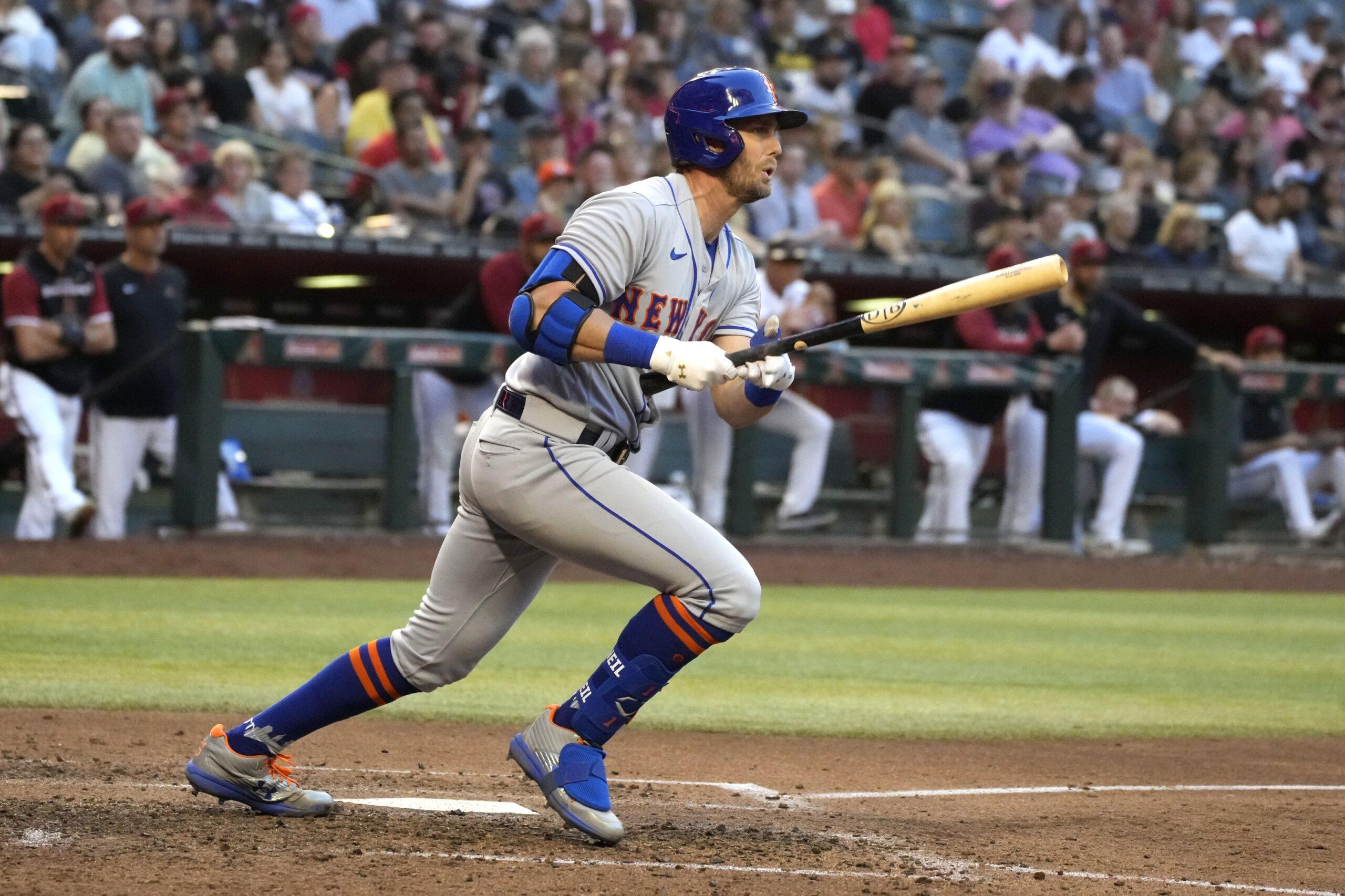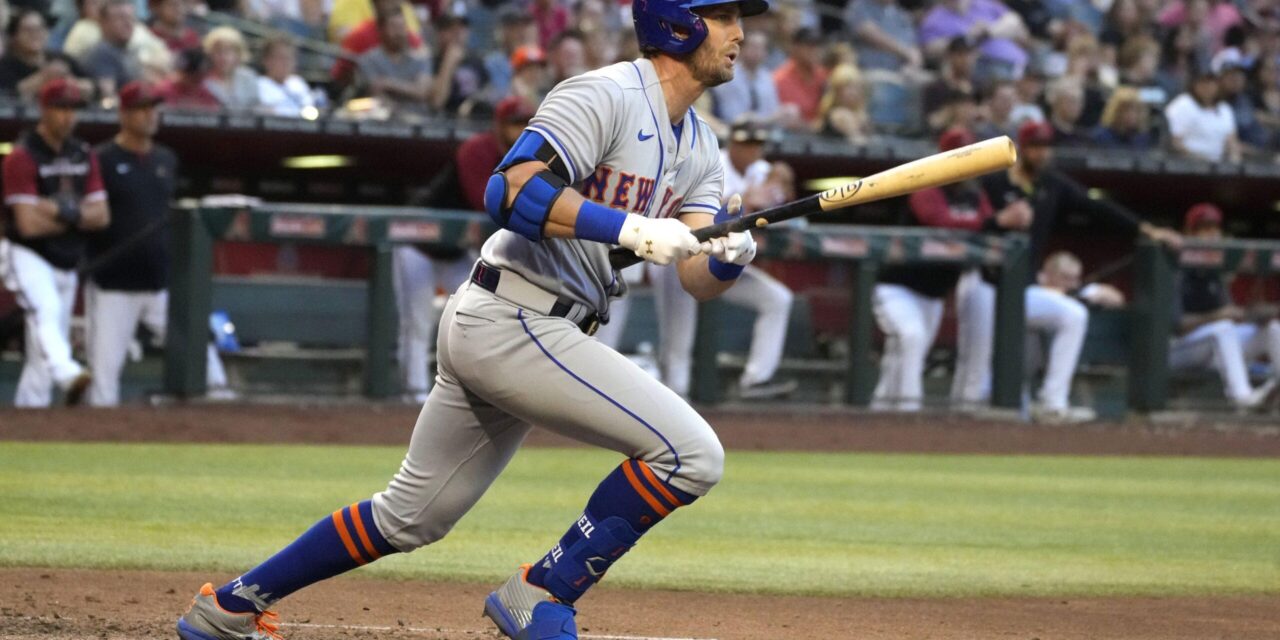
Rick Scuteri-USA TODAY Sports
We have heard about the 2023 Major League Baseball rule changes for a while. Next season, there will be a pitch clock, larger bases, and restrictions on shifting, to name three. For the next couple of seasons, MLB will be in an evaluation period, assessing if the rule changes bring about the desired results of shorter, more action-packed games that increase fan interest. As the cliché goes, time will tell. Let’s take a look at how the game may be a bit different next April.
Larger Bases
The cushions will now be 18 inches by 18 inches, as opposed to the traditional 15 inches by 15 inches. This will result in the distance between bases being reduced by four and one-half inches. Will this encourage more stolen base attempts, one outcome that Commissioner Rob Manfred is seeking, to increase action on the field? Well, the answer is yes, it should. In an article in The Athletic by Jayson Stark, the author points out that in the minor leagues, where the larger bases were used in 2022, there were 2.83 stolen base attempts per game, versus 1.36 attempts in the major leagues during the same year.
Does four and one-half inches less of a distance make that much of a difference? Sprint speed is recorded on Baseball Savant. Using that metric and source, the fastest player in MLB last year was Corbin Carroll of the Arizona Diamondbacks. His sprint speed is an elite 30.7 feet per second. Assuming a ten-foot lead (considered average), it would take Carroll 2.60 seconds to get to second base (80 feet). With the larger bases, Carroll’s time to second with the same lead is 2.59 seconds. The Mets’ fastest runner by sprint speed is Brandon Nimmo, at 28.7 feet per second. At that rate of speed, it takes Nimmo 2.79 seconds to go 80 feet, and 2.77 seconds to travel 79 feet, 7 and one-half inches. The differences are minuscule, but think about how many times stolen base plays are so close that they go to review.
Another factor, that may have a greater impact on stolen bases, is how balks will be called in 2023. A pitcher will be allowed two “disengagements” from the pitching rubber when a runner is on base. Unless something changes, runners will have free rein on the base paths once the “disengagement” maximum is reached. Sure, Carroll will be able to display his sprint speed, but it may not matter so much if pitchers unsuccessfully try to pick him off.
Put this all together, and there probably will not be a rush to sign or trade for base stealers, radically affecting roster construction. But the stolen base will very likely become more common in 2023, harkening back to baseball of the 1980s when players like Vince Coleman, Tim Raines, and Mookie Wilson were able to impact a game’s outcome more often than speed merchants have in recent years.
Shift Restrictions
This rule, where two infielders will be required to be on each side of second base and on the infield dirt, has also been used in the minor leagues. From Stark’s article, an interesting angle of this is that there are no such restrictions on outfielders, meaning, a team could slide their left fielder over to play a right field “short field”, leaving the left side of the outfield open. Wow! Imagine if Daniel Vogelbach floated one into the left-field corner with no one there, and we had the opportunity to see him get as far as he could around the bases.
Stark also points out that shifts have had a disproportionate effect on left-handed hitters. From his article:
| YEAR | BATTING AVERAGE | LH SHIFTS |
|---|---|---|
|
2022
|
.146
|
56%
|
|
2019
|
.156
|
42%
|
|
2017
|
.189
|
22%
|
*percentage of plate appearances versus shifts from Statcast
As shifting goes up, batting average on ground balls by lefties goes down. With a shift restriction, left-handed batters stand to benefit significantly. These numbers do not change significantly with exit velocity, showing just how good teams have become not only at shifting, but positioning defenders within a shift. Former Mets’ hitting coach, and current Phillies’ hitting coach Kevin Long suggested the following (from the article in The Athletic):
“There are going to be guys where their average skyrockets. I think Kyle Schwarber is going to be one of the biggest. Anthony Rizzo is going to be another one. Brian McCann, when he played, would have been a huge one, because those guys don’t run.”
So, if we are looking for impact on roster construction, this may be the hot zone. If left-handed hitters, particularly slow-footed ones, stand to benefit most from the shifting restriction, might teams place a higher value on them? Could that have factored in the Yankees’ thinking on bringing Rizzo back? How about the Mets’ decision on Vogelbach? If so, why not place a higher value on Dominic Smith?
This is the assessment phase. The rule changes will alter the way game is played (this article did not even touch on the pitch clock, which will push veteran hurlers out of their comfort zones). How different things will be, and how teams may change their valuation of players will evolve over time.
One more thing, Manfred has hinted at more (as yet, undisclosed) changes in 2024 (or beyond). Baseball is going to continue changing. To some, that’s a bad thing, and to others, it’s a welcome thing. Either way, we don’t have a choice. Let’s try to enjoy the ride.
















